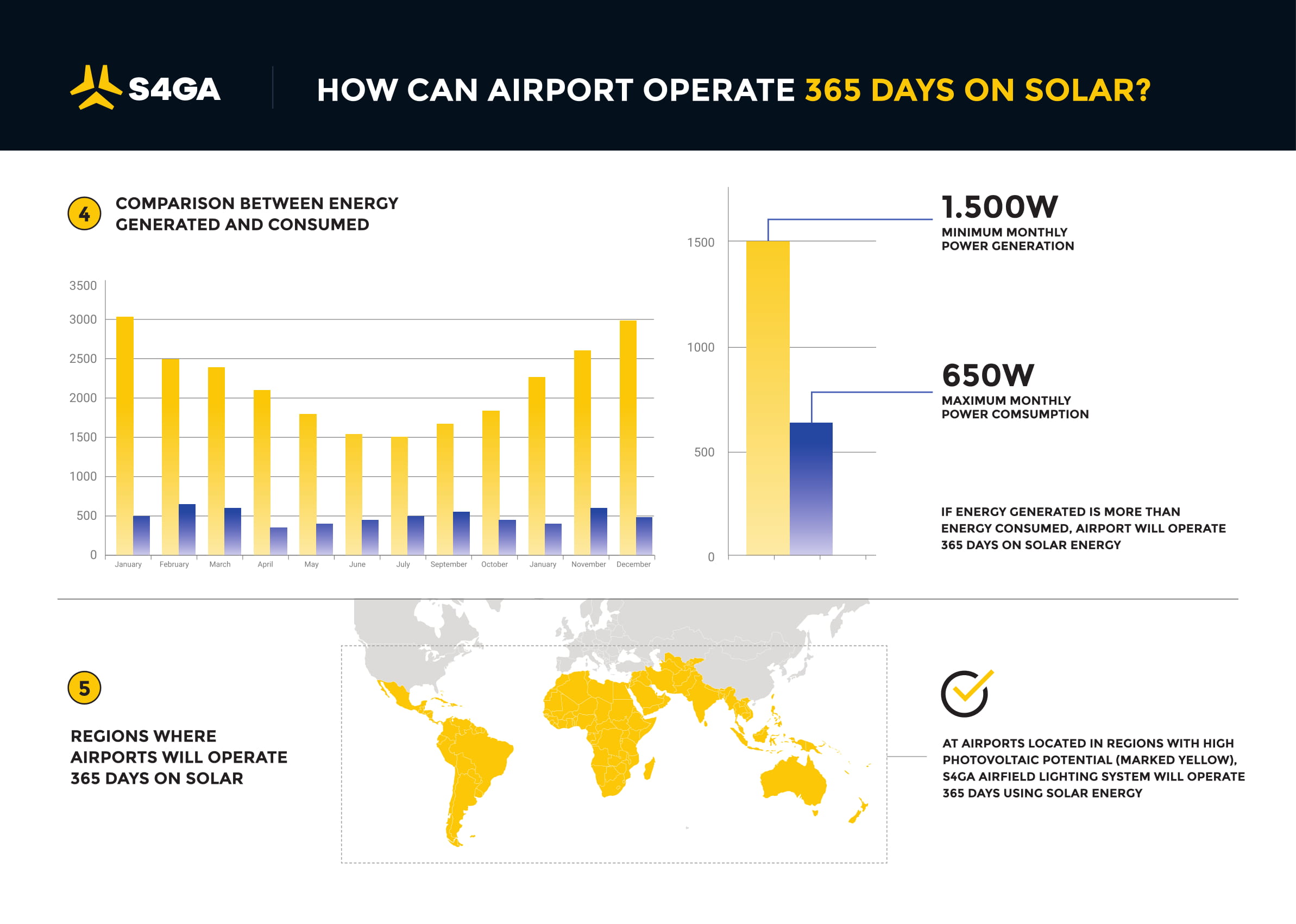Airport Runway Lighting that Operates 365 Days on Solar
| Company | S4GA |
|---|---|
| Date | 29.07.2019 |
Solar cells convert light into electricity. Their efficiency has already reached almost 25%, which means that with every 4 watts supplied for free by the sun, you can get 1 watt of power. Usually, it is stored in specially adapted batteries.
A system consisting of one or many solar panels and a charging regulator is built to charge the battery so that the battery can be fully recharged as well as protected from overcharging and harmful deep discharge.
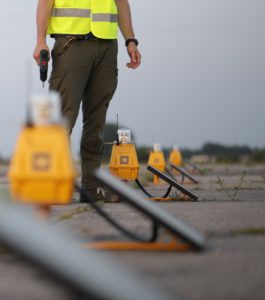 Solar Systems – Advantages
Solar Systems – Advantages
The basic features of photovoltaic installations are as follows:
- no fuel is needed, and therefore all problems related to transport and storage of fuel are eliminated;
- they do not require intensive cooling, so they can be located away from rivers;
- cells also transform the dispersed part of solar radiation falling to Earth;
- their performance only slightly decreases over time;
- their lifetime is 20-30 years;
- due to the lack of moving parts, they do not wear out, do not require spare parts or maintenance.
Almost advantages only. Even obvious disadvantages: small power obtained from surface unit and dependence on solar radiation conditions which can be compensated by means of modern technology, do not interfere with very beneficial use for the unusual but useful purpose of permanent lighting of the airport. The final result is astonishingly positive.
Solar Power for Airport Runway
S4GA engineers have calculated very carefully all the phenomena and factors resulting in design of a source of energy that guarantees sufficient power to supply permanent runway lighting to airports not only situated at low latitudes, but also at the higher ones where the sun is relatively low above the horizon and often does not appear from behind the clouds for many days. The point is that an airport equipped with solar runway system, without any additional auxiliary power source, can operate 365 days a year reliably and safely. In this particular case, the aviation redundancy principle is especially redundant.
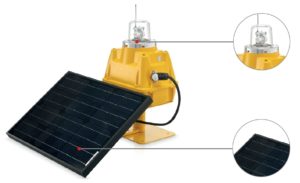 The basic idea is very simple. Each lighting unit has modern, effective and electricity low consuming (when active only) LED optics and carefully designed built-in power bank consisting of generating 20W of power solar panel and two batteries. The principle is that the light unit is as long operative as long as he has a positive energy balance: in the considered unit of time uses less energy for lighting than it produces at the same time. It’s very easy to assess whether S4GA solar airport lighting can be safely adapted to the local solar conditions by assuming average demand for electrical power and its consumption by lighting.
The basic idea is very simple. Each lighting unit has modern, effective and electricity low consuming (when active only) LED optics and carefully designed built-in power bank consisting of generating 20W of power solar panel and two batteries. The principle is that the light unit is as long operative as long as he has a positive energy balance: in the considered unit of time uses less energy for lighting than it produces at the same time. It’s very easy to assess whether S4GA solar airport lighting can be safely adapted to the local solar conditions by assuming average demand for electrical power and its consumption by lighting.
Power consumption
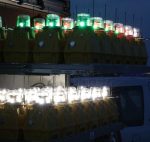 Each airport has its characteristics of air operations. On this basis, the average amount of flights can be assumed. This number would directly influence the utilization of runway lighting. For example, if an airport running 10 flights a day (when each flight would require 30 minutes of lighting being activated) would require 5 hours of runway lighting a day or 150 hours a month. How we calculated that – check here.
Each airport has its characteristics of air operations. On this basis, the average amount of flights can be assumed. This number would directly influence the utilization of runway lighting. For example, if an airport running 10 flights a day (when each flight would require 30 minutes of lighting being activated) would require 5 hours of runway lighting a day or 150 hours a month. How we calculated that – check here.
LED lighting has precisely calculated energy consumption defined in Wh. Assuming that the daily average of flights is known one can easily determine monthly energy consumption with safety margin ( taking into account abnormal and emergency situations). In the final effects we will receive reasonably calculated annual, month by month, demand energy.
For the given example of 10 flights a day, lighting system would consume 650W of energy. Questions that should be asked next is – would solar be capable of supplying enough energy to cover demand.
Power generation
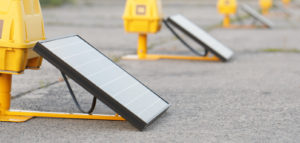 As mentioned, each lighting unit has a photovoltaic panel – its own, small but quite effective power plant that by means of up to 2 batteries (power bank) supply electricity to the lighting system. The performance characteristics of each twenty-watt panel are very precisely defined, and its power depends on several basic factors, which – to simplify the description – boil down to the geographical position (latitude) of the workplace, tilt, and direction of a solar panel.
As mentioned, each lighting unit has a photovoltaic panel – its own, small but quite effective power plant that by means of up to 2 batteries (power bank) supply electricity to the lighting system. The performance characteristics of each twenty-watt panel are very precisely defined, and its power depends on several basic factors, which – to simplify the description – boil down to the geographical position (latitude) of the workplace, tilt, and direction of a solar panel.
After analyzing the available options for reliable simulation, S4GA adapted well known Photovoltaic Geographical Information System provided by the European Community to simulate monthly power output for the selected location. For the above calculated power demand of 650W for average assumed conditions, the power generated by S4GA solar runway lighting system for instance at point 26.8325° S, 49.0934° W (Blumenau Airport, Brazil) is within the range of 1500 to 2500 Watt / months (depending on whether it is summer or winter time).
Solar Runway Lighting Produces More Watts than Consumes
The comparison is quite straightforward. For the selected location example, the power generated by modern and highly efficient solar panels is at least twice as high as necessary to effectively and safely illuminate the airport for the duration and frequency of the assumed flight operations. The company has conducted a number of direct tests in various places around the World and guarantees correctness of calculations and full safety of using solar airport lighting as the only permanent lighting for runways and other, in principle, any purposes, provided that their use will be preceded by a similar – simple – analysis of power balance.
The S4GA product is designed to be used in Africa, South America, South-East Asia, Australia and New Zealand. Those regions have their photovoltaic potential high enough, to use described lighting system as a permanent one.
Contact
EPBC Airfield
Sylwestra Kaliskiego 57
Warsaw
Poland
01-476
- +48 22 270 10 29

